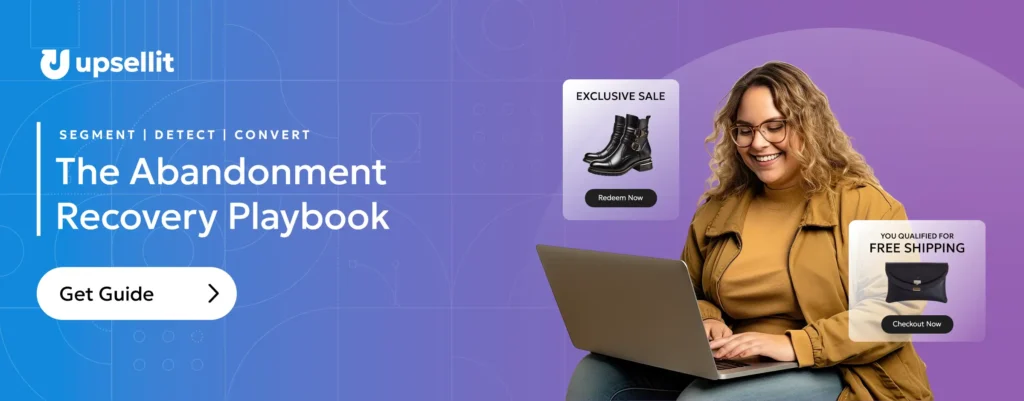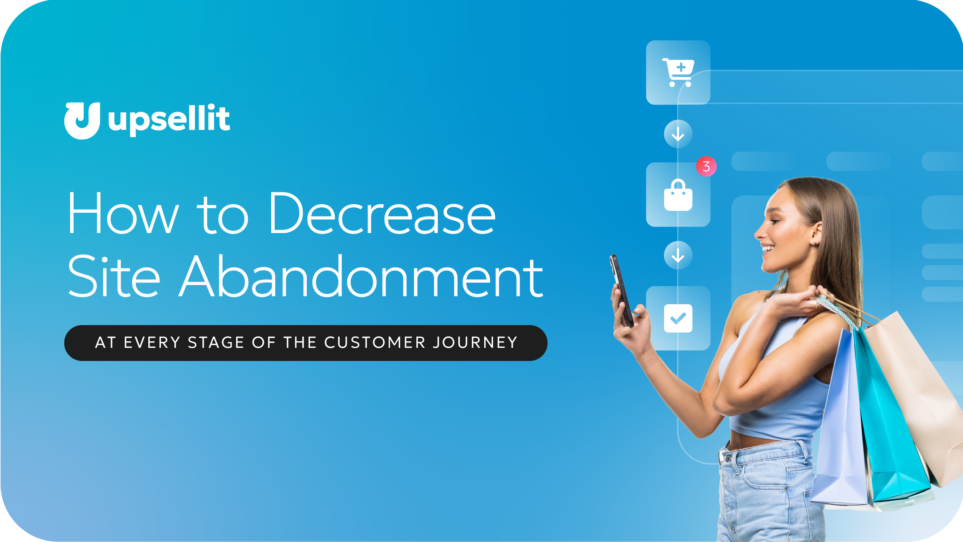Site abandonment is a major challenge for ecommerce brands—and it can significantly impact your bottom line. Fortunately, there are proven strategies to reduce site abandonment and convert lost opportunities into sales.
In this comprehensive guide, we’ll provide actionable insights and techniques to minimize site abandonment on your website. Explore user behavior patterns, uncover the root causes of ecommerce abandonment, and learn how to keep visitors engaged through every stage of their journey.
What is Site Abandonment?
Site abandonment occurs when users visit your site but leave without completing the desired action—whether that’s a purchase, form submission, or other conversion. It’s the digital equivalent of window shopping, where potential customers browse your storefront but leave before taking the next step.
Site abandonment can happen at any point in the customer journey, from the initial landing page to the checkout process. That’s why reducing abandonment requires optimization at every stage—not just at the cart.
By identifying key friction points, businesses can implement targeted strategies to improve the user experience, build trust, and reduce the chances of visitors abandoning their site before converting.
The Four Types of Site Abandonment
1. Site Bounce
A site bounce occurs when a user visits a webpage but exits immediately without interacting. High bounce rates usually reflect a poor first impression, irrelevant content, or an unoptimized landing page.
To reduce bounce-related site abandonment, brands should focus on enhancing content relevance, improving design, and delivering a seamless, engaging experience from the first click.
2. Product Abandonment
Product abandonment happens when users leave a product page without adding the item to their cart. Reasons range from price concerns to lack of details or comparison shopping.
Understanding product abandonment helps businesses refine product pages, overcome shopper hesitation, and guide potential buyers further down the funnel.
3. Cart Abandonment
Cart abandonment is one of the most well-known forms of site abandonment in ecommerce, with an average rate of 70%. It occurs when shoppers add items to their cart but leave before completing checkout.
Reducing cart abandonment involves simplifying the checkout flow, being upfront with pricing, and retargeting abandoning visitors to bring them back to convert.
4. Checkout Abandonment
Checkout abandonment refers to users who exit during the final stages of the transaction. Despite showing strong intent to purchase, something in the process—like complex forms or unclear costs—leads to a drop-off.
Optimizing checkout usability, security, and speed is critical for recovering these near-conversions.
Preventing Abandonment at Each Stage
How to Minimize Site Bounce
Generally, high bounce rates stem from a poor first impression or a website experience that doesn’t meet expectations. From user experience enhancements to content optimization, discover the keys to keeping your audience engaged and your bounce rates minimized.
Have an Easy-to-Use Site
Simplify navigation, use fast-loading pages, and ensure mobile optimization. A seamless, intuitive layout helps visitors explore longer and reduce exit rates.
Highlight Best Sellers
Showcase top-rated or best-selling products prominently. This instantly communicates value and encourages deeper exploration—reducing bounce-related abandonment.
Limit Entrance Pop-Ups
Too many pop-ups can overwhelm new visitors. Instead, use behavior-based or exit-intent offers that engage rather than frustrate, helping to reduce abandonment without hurting the user experience.
How to Reduce Product Abandonment
Indecision, lack of information, or even distractions play a role in product abandonment, highlighting the importance of crafting compelling, transparent, and user-friendly product pages that instill confidence and guide customers seamlessly toward the final purchase.
By understanding these dynamics, businesses can implement targeted strategies to address specific pain points and reduce product page abandonment.
Use Clear Descriptions and High-Quality Images
Detailed descriptions paired with strong visuals help customers understand the product and feel more confident in making a purchase—minimizing product abandonment.
Include Customer Reviews
Customer reviews add credibility and help alleviate doubts. They can be a powerful tool in converting on-the-fence shoppers and reducing abandonment.
Offer Product Recommendations
Personalized product recommendations keep visitors engaged and may lead them to better-fit options. This reduces drop-offs and extends time on site by leveraging the power of AI.
Leverage Out of Stock Notifications
When an item is unavailable, let users sign up for restock alerts. This helps retain interested customers and reduces abandonment due to inventory issues.
How to Prevent Cart Abandonment
Cart abandonment is one of the most common challenges in ecommerce, so it’s critical for retailers to have strategies in place to recover that lost revenue.
To reduce cart abandonment, you need to understand why shoppers are leaving in the first place. High prices, unexpected shipping costs, complicated checkout processes, and lack of urgency can all contribute to abandonment.
Be Upfront About Shipping Costs
Nearly half of cart abandonments happen due to unexpected fees. Clearly communicate all costs early in the shopping journey to reduce surprises and drop-offs.
Offer In Cart Support
Live chat or FAQs embedded within the cart provide real-time help and reduce friction that can lead to ecommerce abandonment.
Allow Changes to Products
Let users update quantities, sizes, or options in their cart without restarting. A flexible cart improves the experience and minimizes abandonment caused by frustration.
How to Decrease Checkout Abandonment
High checkout abandonment rates signal a breakdown in this critical phase, often due to friction points such as complicated forms, unexpected costs, invalid coupons, or a lack of trust.
Streamlining and optimizing the checkout experience is imperative. A smooth and transparent process, with clear information about costs, shipping, and payment options, encourages customers to follow through with their purchase.
Offer Guest Checkout
Account creation can be a major friction point. A guest checkout option streamlines the process and improves conversion rates—especially for first-time visitors.
Limit Required Fields
Only ask for essential info during checkout. Simplified forms speed up the process and reduce the likelihood of checkout abandonment.
Leverage Progress Bars
Progress indicators help manage expectations and encourage completion. Breaking the process into clear steps creates a sense of momentum and reduces user drop-off.
Reassure Customers with Security Badges
Display trust signals like SSL certificates and secure payment logos. Reinforcing site security reduces hesitation and builds trust in the final moments before conversion.
Reducing Ecommerce Abandonment Doesn’t Have to Be Complicated
For more actionable strategies, download Upsellit’s Abandonment Recovery Playbook. Discover how our patented Exit Detect technology pinpoints abandoning visitors and drives an average 25% conversion rate across industries.





